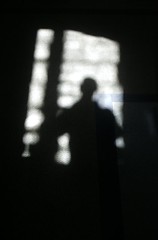biosphere 0.999e
The sun, of course, is always a religious symbol and has always been so used in Christianity; but in some passages in the Hermetic writings the sun is called the demiurge, the "second god". [...] The admired Egyptian religion includes sun-worship, and the sun is among the list of the gods of the Egyptians given in the Asclepius.These Egypto-Hermetic sun-teachings undoubtedly influenced Ficino's sun-magic, and they connected philosophically with Plato on the sun as the intelligible splendour or chief image of the ideas, and religiously with the Pseudo-Dionysian light symbolism. [...] the concentration on the sun in the astral magic, led upwards through the Christian Neoplatonism of Pseudo-Dionysius to the supreme Lux dei, and in this way the sun very nearly is for Ficino what it is for Hermes or for the Emperor Julian, the "second god", or the visible god in the Neoplatonic series.
The De revolutionibus orbium caelestium of Nicholas Copernicus was written between 1507 and 1530, and published in 1543. It was not by magic that Copernicus reached his epoch-making hypothesis of the revolution of the earth round the sun, but by a great achievement in pure mathematical calculation. He introduces his discovery to the reader as a kind of act of contemplation of the world as revelation of God, or as what many philosophers have called the visible god. It is, in short, in the atmosphere of the religion of the world that the Copernican revolution is introduced. [...] One can say, either that the intense emphasis on the sun in this new world-view was the emotional driving force which induced Copernicus to undertake his mathematical calculations on the hypothesis that the sun is indeed at the centre of the planetary system; or that he wished to make his discovery acceptable by presenting it within the framework of this new attitude. [...]
A recently discovered text tells us that Giordano Bruno, when advocating Copernicanism at Oxford, did this in the context of quotations from Ficino's De vita coelitus comparanda. This famous philosopher of the Renaissance thus saw the Copernican sun in some close relationship to Ficinian sun magic.
Yates, Frances. Giordano Bruno and the Hermetic Tradition, Chicago 1964, p. 153-155.



0 Comments:
Post a Comment
<< Home